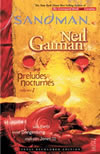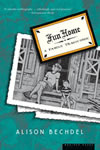Challenged Comic Books and Graphic Novels
This week marks the annual Banned Books Week, a national campaign that highlights the importance of free and open access to information, and calls attention to literary works that are frequently challenged in bookstores, libraries and schools. This year’s Banned Books Week theme focuses on challenged comic books and graphic novels.
Dan Johnson, senior library specialist at the University of Houston Libraries and Association of Research Libraries/Society of American Archivists Mosaic Program fellow, has incorporated his longtime interest in comic books and graphic novels into his scholarly endeavors, having researched and written on a range of topics, from Neil Gaiman’s Sandman to the works of Robert Crumb.
Below, Johnson discusses issues of banned and challenged comic books and graphic novels, and implications for public libraries and the community.
Comic Book Legal Defense Fund
The Comic Book Legal Defense Fund (CBLDF) is a non-profit organization comprised of comic book creators, publishers and readers who come to the defense of comic book shops or libraries that have problems with materials being challenged. Some of them end up having issues where a challenged book is accused of violating community standards.
CBLDF compiled a list of comic books and graphic novels that are constantly in the news, or are known for having challenge or ban issues. In almost all cases they weren’t actively banned, but there were challenge cases for them, usually about age appropriateness. Within public libraries, most make a distinction between graphic novels for adults in one section, graphic novels for teens in another, and graphic novels for younger children in a third section. Often a challenge comes up when a teen or younger child comes home with a book that they got from the adult fiction section.
Addressing the Challenge
In public libraries, there’s a formal review process documented by that library so that the public has access to it and they know what’s going to happen. It requires the person making the challenge to have read the book in toto. That does away with a lot of the challenges because many people haven’t read the whole book.
When they have read the book completely, the challenge goes through an internal review process that involves librarians of that particular institution. The review panel reads the book from beginning to end, where the issue is to determine whether there is some artistic merit or value to this book as literature. These are stories that reflect different community standards, different people’s lives, and different people’s experiences.
As a result of the challenge, the book in question can be pulled completely. That doesn’t happen very often, but it can happen. Second, the book could be re-categorized; they move it from the young adult fiction section to the adult fiction section, for example. The third possible ruling is that the review board determines that the book is appropriate for the library and falls within the scope of their collection development policy. The last step in the review process, after the board comes to an agreement, is that they write a defense letter, stating what they have determined to do and why.
Comic Books and Graphic Novels as Bibliotherapy
I am a parent, and there are all sorts of comic books that I read, but I won’t let my daughter read. I think parents should assess what they’re willing to talk to their children about. Literature can be used as a way to explore things that are challenging or scary for children. One of the ways to work through things that they don’t understand is to read about them in a safe environment. An idea that has been brought up in my classes in graphic novels and library science is that, if you think that it could happen to someone, it has happened to someone. There are readers out there who are looking for books that speak to their experiences. If you can imagine that anyone has gone through it, you should have materials for them to read. That’s the case for literature, and one of the things that comic books and graphic novels are good for. There’s a term for it – bibliotherapy – the idea that a book as a fictional piece is a safe environment in which to explore traumatic things that have happened.
Selected Challenged Works

Sandman by Neil Gaiman and various artists
Sandman by Neil Gaiman and various artists
Following the events that occur when Morpheus, the Sandman and Lord of Dreams, is captured and imprisoned by mistake by a dark magician, this series of graphic novels blends characters from world religions, mythology, and literature in an epic tale. Ambitious in scope, Gaiman’s creation is a high watermark for the comics format, having won various awards including a Hugo and numerous Eisners.
Maus by Art Spiegelman
Spiegelman’s autobiographical tale interweaves the story of his father, Vladek, a Jewish Holocaust survivor from occupied Poland, and Artie’s challenges in making sense of his father’s tale. In Spiegelman’s Pulitzer-winning narrative, Jews are depicted as mice, Germans as cats, and U.S. GIs as dogs in a very emotional story of survival during World War II.

Fun Home: a family tragicomic by Alison Bechdel
Fun Home: a family tragicomic by Alison Bechdel
This graphic novel memoir explores the complexities of family life of lesbian author Bechdel and her distant relationship with her father, a man who spent most of his life in the closet. Ever an enigma full of contradictions, even in his death his intentions are unclear; what might have been an accident could easily have been suicide. Bechdel was recently named as a 2014 MacArthur Foundation fellowship recipient.
- Watchmen by Alan Moore and Dave Gibbons
- Blankets: an illustrated novel by Craig Thompson
- Bone by Jeff Smith
- Persepolis by Marjane Satrapi
- Pride of Baghdad by Brian K. Vaughn and Niko Henrichon
- In the Night Kitchen by Maurice Sendak
- Stuck Rubber Baby by Howard Cruse